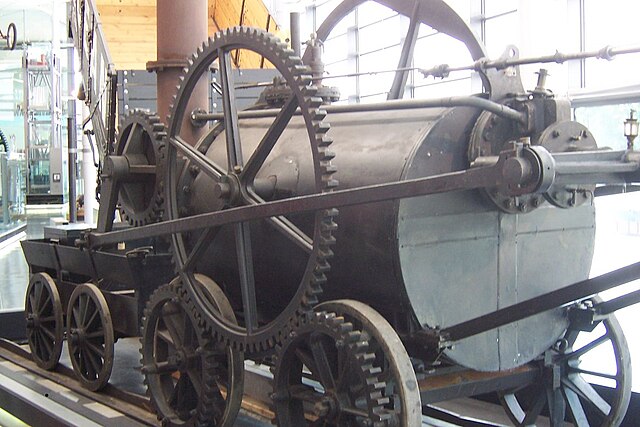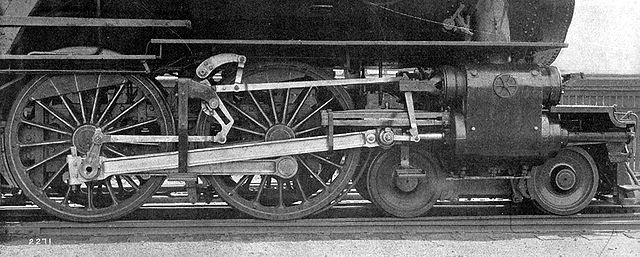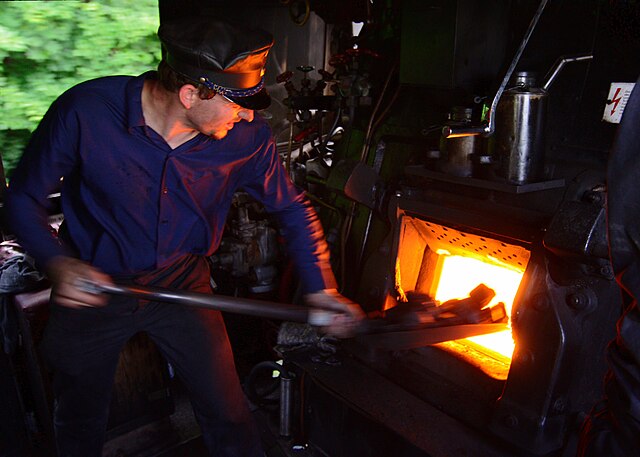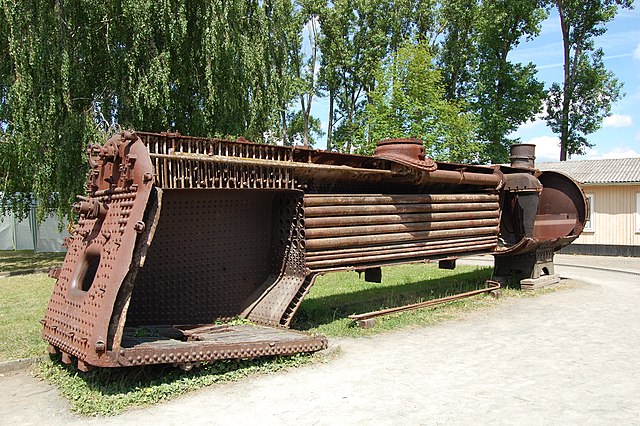We just learned about the steam wagon
Cugnot's - Fardier à vapeur.
Another early steam engine was the
Pen-y-Darren Locomotive.
Just like the steam boat and steam car, people mostly wanted to use steam power to move very heavy things from one place to another.
The big difference between boats, cars and trains was that the train didn't need a steering wheel to make sure it was going the right way, it would just go along the rails carrying its big load.
In 1802 a man from England named Richard Trevithick built a steam engine to be put on metal rails and carry a lot of weight.
It had a steam cylinder hooked up to a rotative beam engine, using a sun and planet style gear to turn the wheels.
To test his locomotive, he had it carry ten tons of iron, which is about 20,000 pounds.
It went about 10 miles and went a little over 2 miles per hour.
This wasn't very fast, about as fast as someone walking.
But it was like someone walking carrying a few giant elephants on their shoulders, so people were very impressed!
His steam engine did not become very popular, but it did help other people in the future learn how to make steam engines that would become the locomotives we know about from history.

(from: wikipedia -
richard trevithick)
Kid Facts - Blast from the past: Tire Skid Marks













